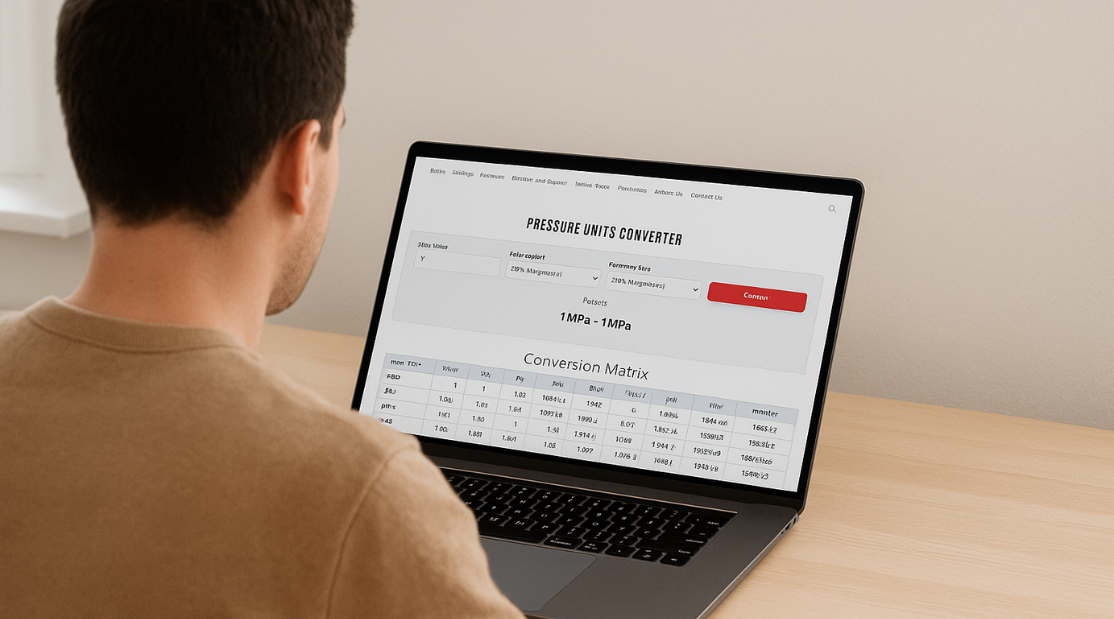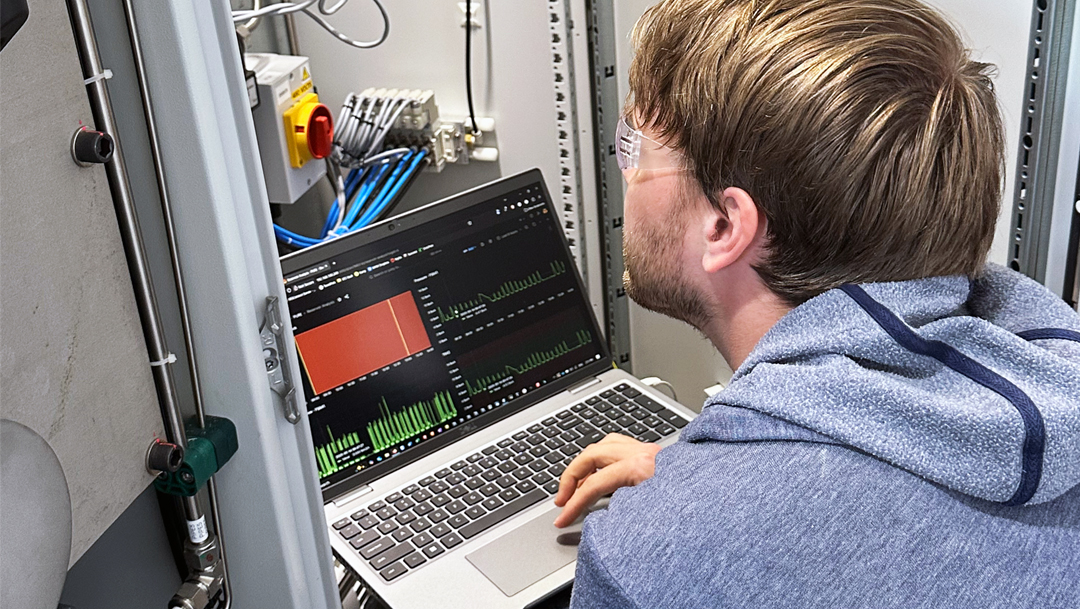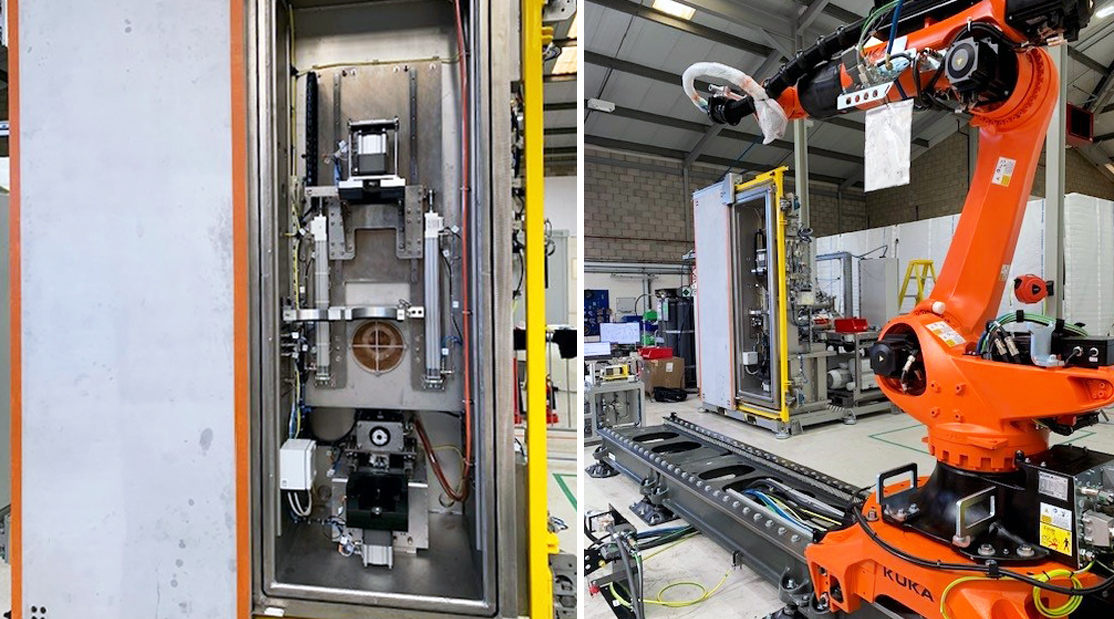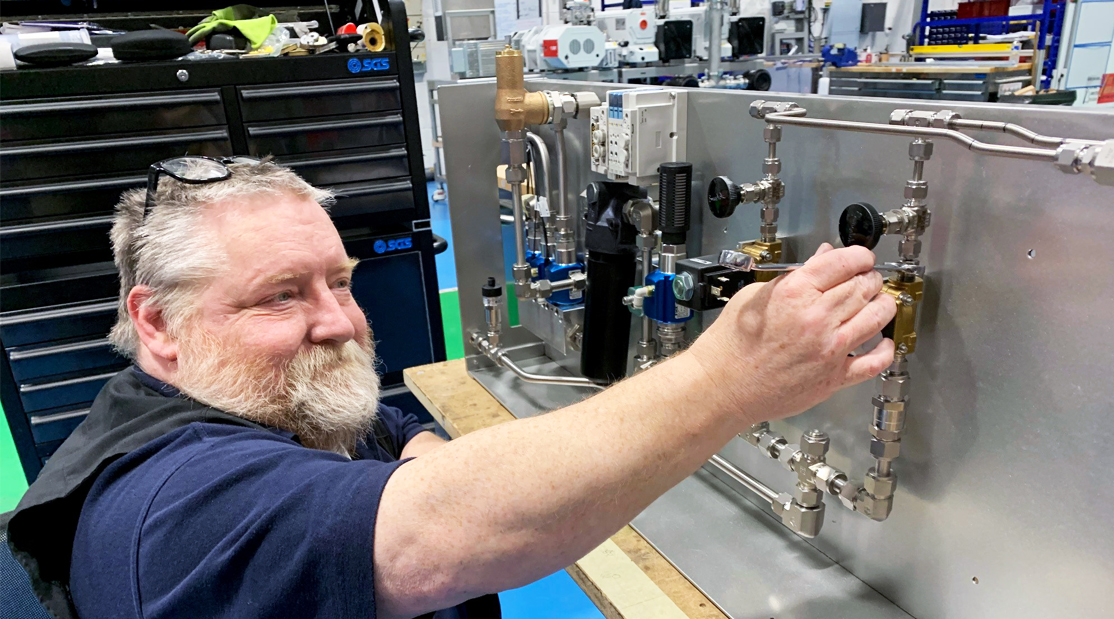We were recently asked to build and fit a filler pipe machine for an automotive fuel system company. VES are no strangers to testing vehicle fuel filler pipes. We have a vast number of machines in active service throughout the world performing such tasks daily. But while this is a very standard project for us, there were a few additional requirements that made this product more of a challenge.
Although this project seemed straightforward, like all projects it presented several challenges, including:
- Cycle Time – While a requirement to produce a part every 32 seconds is not beyond our capability, when considering the geometry of the product, the vacuum chamber itself would need to be quite large.
- Flow Testing – To ensure the part was fully functioning, we added a flow test feature.
- Further Functionality – While the lid is lifting, a passed part would be cold marked, and a failed part would have a hole punched into the pipe. This would also add additional volume.
- Robot-Loading – We needed to integrate a fully automated coupling set, adding further volume to an already large chamber.
Our solution to this was to build a triple chamber machine; by staggering the test itself, we can ensure the critical path – the time when the pumps are doing their thing – is optimised, and the pumps are working as efficiently as possible. While one chamber tests, the other loads, and the last can unload. A fully balanced machine is a joy to watch, as all moving parts come together to create a symphony of efficiency.
Still further measures were required, for example, an auxiliary 'roughing' pump set was included. The pump down cycle can be further segmented into stages: those where the leak detector (The Mass Spectrometer) is exposed to the Pumpset can be taken offline, and the roughing set can take care of the rest of the functionality, thus ensuring our machine would hit the all-important cycle time requirements.
Our original brief was that the machine was to be loaded manually and unloaded automatically. While humans and robots working together in the production environment is commonplace nowadays, safety is still a number one priority. We designed the machine to act as its own barrier – it could be manually loaded from the front and automatically unloaded from the rear.
During the later stages of the project, it became apparent that although the testing function of the plant was currently semi-manual, it would eventually become fully automated. This changed our brief again; we needed to ensure the machine could be manually loaded, with all the functionality described within our original spec, however, we needed to make provisions to allow retrofitting of a full automation system later in order to futureproof the machine.
As a project progresses, the requirements can evolve. VES are very much accustomed to the requirement to be flexible. Our fuel leak testing machines are not off-the-shelf items, and while our modular design enables swift design & production time, the overall machine concept must fit in with the whole factory ecosystem.
Every project we undertake has its fair share of twists and turns; this was no exception. Our project team work tirelessly to ensure the machine is fully compliant and to make the final sign off procedure as smooth as possible. Communication is key. VES consider the companies we work with partners rather than customers. It is due to this ethos that we can take on these kinds of challenges. With a wealth of knowledge, expertise, and relevant problem-solving acumen, VES can succeed where others may fall short. We pride ourselves on being able to roll with the punches and understand that things change. As a supplier of critical production equipment, our ability to adapt will enable us to continue to solve these problems.
We are frequently surprised by seemingly straightforward projects; our Engineering team relish the challenge and pride themselves on stepping up to the plate every single time.



